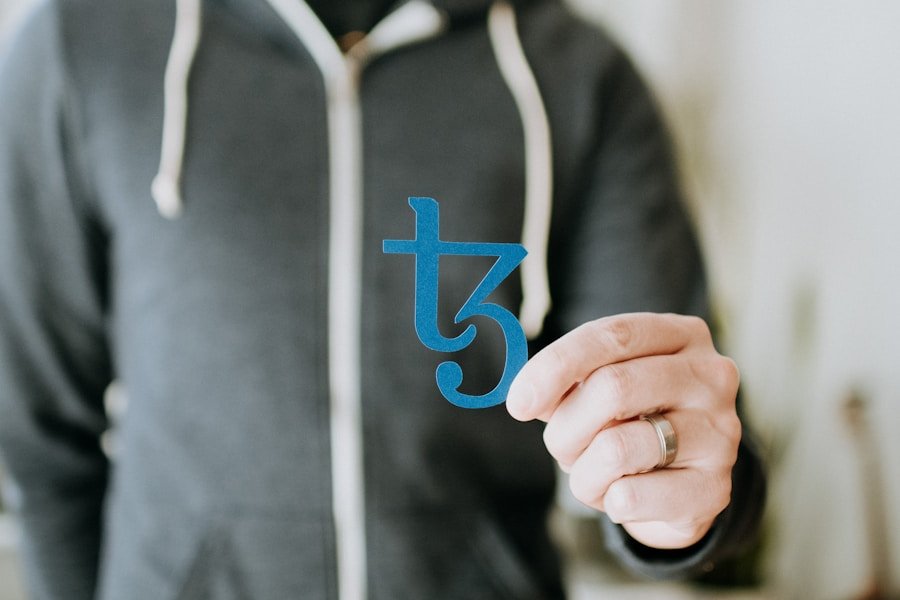Decentralized applications, or dApps, are a type of software application that runs on a decentralized network of computers rather than a single centralized server. This means that dApps are not controlled by any single entity, making them resistant to censorship and tampering. The concept of dApps is closely tied to blockchain technology, which provides the underlying infrastructure for these applications to operate in a secure and transparent manner.
One of the key features of dApps is their use of smart contracts, which are self-executing contracts with the terms of the agreement directly written into code. This allows for trustless and automated transactions, as well as the ability to create complex decentralized systems without the need for intermediaries. Additionally, dApps often utilize tokens or cryptocurrencies as a means of value transfer within the application, further enhancing their decentralized nature.
Overall, dApps represent a shift towards a more open and transparent internet, where users have greater control over their data and interactions. As the technology continues to evolve, dApps have the potential to disrupt traditional industries and create new opportunities for innovation and collaboration.
The Impact of Blockchain Technology on dApp Development
Blockchain technology has had a profound impact on the development of dApps, providing the foundation for their decentralized and secure nature. By utilizing a distributed ledger, blockchain allows for transparent and immutable record-keeping, which is essential for the trustless operation of dApps. This technology also enables the use of smart contracts, which are a key component of many dApps and allow for automated and secure transactions.
Furthermore, blockchain technology has opened up new possibilities for tokenization, allowing for the creation of digital assets that can be easily transferred and traded within dApps. This has led to the rise of decentralized finance (DeFi) applications, which aim to provide financial services without the need for traditional intermediaries. The impact of blockchain on dApp development is also evident in the growing interest from both developers and users, as they seek out new ways to leverage this technology for a wide range of applications.
As blockchain technology continues to mature and evolve, it is likely that we will see even greater innovation in the world of dApp development. From improved scalability and interoperability to new consensus mechanisms and privacy features, the impact of blockchain on dApps is set to continue shaping the future of decentralized applications.
Exploring the Latest Innovations in dApp Design and Functionality
In recent years, there have been significant advancements in the design and functionality of dApps, driven by the growing demand for user-friendly and intuitive decentralized applications. One notable innovation is the use of decentralized storage solutions, which allow for the secure and censorship-resistant storage of data within dApps. This has opened up new possibilities for applications in areas such as file sharing, social networking, and content publishing.
Another area of innovation in dApp design is the use of decentralized identity solutions, which aim to provide users with greater control over their personal data and digital identities. By leveraging blockchain technology, these solutions enable users to manage their identities across different applications without relying on centralized authorities. This has the potential to revolutionize how we interact with digital services and protect our privacy online.
Additionally, advancements in user experience (UX) design have played a crucial role in making dApps more accessible to a wider audience. From streamlined onboarding processes to intuitive interfaces, these improvements have helped to bridge the gap between traditional applications and decentralized alternatives. As dApp design and functionality continue to evolve, we can expect to see even more innovative solutions that push the boundaries of what is possible in the world of decentralized applications.
Overcoming Challenges in dApp Adoption and Integration
While there are many benefits to using dApps, there are also several challenges that need to be addressed in order to achieve widespread adoption and integration. One of the main challenges is scalability, as many existing blockchain networks struggle to handle large numbers of transactions and users. This has led to issues such as high fees and slow confirmation times, which can hinder the usability of dApps for everyday users.
Another challenge is interoperability, as different blockchain networks often operate in isolation from one another. This can make it difficult for dApps to interact with each other or access data from external sources, limiting their potential functionality. Efforts are underway to address this issue through initiatives such as cross-chain communication protocols and interoperability standards.
Furthermore, regulatory uncertainty and compliance requirements present a significant barrier to the adoption of dApps in many jurisdictions. As governments around the world grapple with how to regulate blockchain and cryptocurrency technologies, developers and users are often left uncertain about the legal implications of using dApps. Overcoming these challenges will require collaboration between industry stakeholders, regulators, and policymakers to create a clear and supportive environment for dApp adoption and integration.
The Role of Smart Contracts in Revolutionizing dApp Transactions
Smart contracts play a central role in revolutionizing transactions within dApps, offering a secure and automated way to execute agreements without the need for intermediaries. By leveraging blockchain technology, smart contracts enable trustless interactions between parties, as the terms of the contract are directly written into code and executed automatically when certain conditions are met. This has wide-ranging implications for industries such as finance, real estate, supply chain management, and more.
One of the key benefits of smart contracts is their ability to reduce reliance on traditional legal systems and intermediaries, leading to cost savings and increased efficiency. For example, in the realm of decentralized finance (DeFi), smart contracts are used to create lending platforms, decentralized exchanges, and other financial services that operate without the need for banks or brokers. This has opened up new opportunities for financial inclusion and access to capital for individuals around the world.
Additionally, smart contracts enable new forms of programmable money and assets within dApps, allowing for complex financial instruments and tokenized assets to be created and traded on blockchain networks. This has led to the rise of non-fungible tokens (NFTs), which are unique digital assets that can represent anything from art and collectibles to real estate and intellectual property. As smart contract technology continues to evolve, we can expect to see even more innovative use cases that revolutionize how transactions are conducted within dApps.
Security and Privacy Considerations in the World of dApps
Security and privacy are critical considerations in the world of dApps, as they often handle sensitive data and financial transactions that require robust protection against threats such as hacking and fraud. One of the main security challenges facing dApps is the risk of smart contract vulnerabilities, which can lead to exploits and financial losses if not properly audited and tested. This has led to an increased focus on formal verification methods and security best practices for smart contract development.
Another area of concern is user privacy, as many dApps rely on public blockchain networks that store transaction data in a transparent and immutable manner. While this provides benefits such as auditability and transparency, it also raises questions about how to protect user privacy in a decentralized environment. Efforts are underway to develop privacy-preserving technologies such as zero-knowledge proofs and secure multi-party computation that can be integrated into dApps to enhance user privacy.
Furthermore, securing decentralized storage solutions and decentralized identity systems presents unique challenges that require careful consideration of threat models and risk mitigation strategies. As the adoption of dApps continues to grow, it will be essential for developers and users alike to prioritize security and privacy in order to build trust in these new decentralized systems.
The Future of dApps: Predictions and Potential Applications
Looking ahead, the future of dApps holds great promise for continued innovation and disruption across a wide range of industries. One area with significant potential is decentralized finance (DeFi), which aims to create an open and accessible financial system that operates without traditional intermediaries. As DeFi continues to evolve, we can expect to see new forms of lending, borrowing, trading, and asset management that provide greater financial inclusion for individuals around the world.
Another area of interest is decentralized governance systems, which aim to create transparent and democratic decision-making processes within organizations and communities. By leveraging blockchain technology, these systems enable stakeholders to participate in governance decisions through voting mechanisms that are resistant to manipulation or censorship. This has implications for areas such as corporate governance, community management, and political voting systems.
Additionally, as advancements in blockchain technology continue to improve scalability, interoperability, and privacy features, we can expect to see even more diverse applications for dApps in areas such as supply chain management, healthcare data management, digital identity solutions, gaming, social networking, and more. The potential for innovation within the world of dApps is vast, with new use cases emerging as developers explore the capabilities of this transformative technology.
In conclusion, decentralized applications represent a paradigm shift towards a more open and transparent internet where users have greater control over their data and interactions. With advancements in blockchain technology driving innovation in dApp design and functionality, we are witnessing the emergence of new possibilities for trustless transactions, programmable assets, and decentralized governance systems. While there are challenges to overcome in terms of adoption, integration, security, and privacy considerations, the future of dApps holds great promise for continued disruption across a wide range of industries. As we look ahead to what lies beyond the horizon, it is clear that decentralized applications have the potential to revolutionize how we interact with digital services and create new opportunities for collaboration and innovation on a global scale.








